How to put linoleum correctly
Linoleum is a practical and attractive floor covering that is found in houses, apartments, summer cottages, offices, shopping centers, public institutions ... Almost everywhere. How to lay linoleum, how to do it right - read on.
The content of the article
On what basis
Even when choosing a floor covering, the question arises of what to lay linoleum on. Is it necessary to prepare the base and if so, how seriously. The answer is simple: linoleum can be laid on any base. The main thing is that it is even, durable and clean. Preparation takes place and can be easy and quick if the ground is level. In this case, the floor is simply cleaned and dried. If the floor has potholes, large irregularities, preparation takes longer. For correction, a screed or self-leveling mixtures can be used; a dry screed with sheet building material (plywood, OSB, MDF boards) is also used. It all depends on the type of base.
Concrete and wood floor
You can easily lay linoleum on a concrete floor. In general, there can be drops on the surface, the main thing is that they are not local - small and deep pits and bumps are excluded. The swings can be, but smooth. If there are significant irregularities, it is better to fill in the leveling screed before laying the linoleum.
This topcoat is also laid on a flat wooden floor. Many people think that under it the wood will rot. If the wood is dry, without signs of infection by fungi and mold, then nothing will happen to it. With proper installation, an airtight layer is obtained, so that moisture does not penetrate inside. If there are seams, they are welded, so moisture penetration is unlikely. To prevent water from getting under skirting boards, choose wide models and press them well to the floor. A more reliable way is to lay a self-adhesive tape for sealing under the linoleum around the perimeter.
If the boardwalk itself is made correctly, with normal ventilation, then it has nothing to rot. If you are very worried, treat the floor with antiseptics before laying the linoleum.
If there are noticeable gaps in the plank floor, they will be visible on the covering over time. If they are small, they can be putty, using grinding to level the surface. Occasionally the floorboards will bend, lifting slightly at the edges. It will not work to grind such a floor - there are a lot of nails. In this case, or if the gaps are too large, it is recommended to put sheet material on top of the boards - plywood, OSB, MDF. They are good because they do not have a very large thermal expansion, and the OSB does not yet absorb moisture (you can take moisture-resistant plywood), and this is important in humid rooms (in the kitchen, for example).
Chipboard and fiberboard as a base for linoleum is not a very good option - when the humidity rises, they swell, fiberboard goes in waves. After drying, the original shape is not restored, so that the linoleum laid on top hunches and wrinkles.
Before laying linoleum, you need to lay OSB or plywood... This is necessary if the plank floor "plays", the boards bend. If you lay the coating directly on the boards, it will crack in places of deflection, and quite soon. And this means replacing the floor covering, and problems with the boards are also possible - moisture can seep into the cracks.
When laying any sheet material for leveling the floor under linoleum, it is laid with a gap between the seams - so that they do not coincide (like brickwork). Small seams are left between the sheets, which are then filled with elastic (non-hardening) mastic.
Is it possible to put new linoleum on the old floor
We must say right away that it is advisable to remove the old coating before laying the linoleum. But this can be problematic and then flooring is allowed on top of the existing one. It is true only if the old floor is flat or irregularities can be repaired. New linoleum is placed on the old one, on the tiles, on the parquet. If there are defects in the base - chips, dents, protrusions - they are eliminated, sealed with putty, squeezed, the seams between the tiles are rubbed so that the surface is even.
With old linoleum, as with a substrate, there are usually no problems. If there are bumps, they are pierced, filled with glue, the cracks are coated with a repair compound - cold welding for "C" type linoleum or sealant. When laying new linoleum on an old one, there may be another problem - it will turn out too soft and significant indentations may form under the furniture legs.
On parquet, as well as on a plank floor, it is advisable to lay a substrate of sheet material - the planks can also "walk", tearing the coating.
To glue or not
Before laying linoleum, you need to decide whether you will glue it or not. It is believed that it is not necessary to glue it in houses and apartments. It is pressed against skirting boards, furniture, large-sized appliances, etc. All this "keeps" him in place. Sometimes it works, sometimes it doesn't. Usually works on hard semi-commercial and commercial types of coatings, and does not work on softer - household ones.
It's about thermal expansion. In summer, when it's hot, linoleum expands "crawling" from under furniture and appliances. In the fall, it shrinks to its previous size, but does not return under the furniture. Waves and bumps are formed. Therefore, the majority agree that it is necessary to fix it.
Just keep in mind that linoleum either does not need to be glued at all, or glued completely. Glue in some places - it is almost guaranteed to get humps and bulges after a while.
How to glue
Before laying linoleum, you need to figure out how to glue it. If the room is small, household linoleum is laid in one piece on a smooth base (sheet material, old linoleum, etc.), you can fix it on double-sided tape. It is fixed securely, but due to thermal expansion, humps can form between the adhesive tape. Therefore, if you glue linoleum, then with glue.
There are two types of adhesives:
- Glue, which, after drying, creates a rigid bond between the floor and the coating (the most famous and often used for linoleum flooring is PVA);
- wet adhesion, applied with a roller or brush (for absorbent substrates);
- dry adhesion applied with a spatula (universal, including for non-absorbent substrates);
- Fixation - a composition that is first applied to the base, dries up, forming a sticky layer (like on scotch tape). Linoleum is rolled onto this layer, which adheres and, during operation, does not move.
The first option is more familiar to us, but when changing the coating we have to suffer for a long time, tearing off the coating and the remnants of glue from the base. The fixation holds it “on shift” no less reliably, but allows it to be easily rebuilt several times (from 5 to 8, depending on the composition).
Fixation
Fixings are used for laying household and semi-commercial linoleum. If we talk about the price per liter, then fixation is much more expensive. But her consumption is much lower (100-180 g / square), so gluing one square meter will be cheaper. From all points of view, this is the best option.Here are a few normal clamps to work with:
- Homakoll 186Prof (Homakol) is a universal fixing compound for repeated gluing of flexible floor coverings.
- Fobo 541 Eurofix Anti Slip - fixing for materials with vinyl or bitumen backing on absorbent or non-absorbent substrates.
- Fobo 545 Polaris is a glue-fixer for residential and public premises with medium load (any substrates are absorbent).
- Arlok 39 (Arlok 39) - adhesive fixer for flexible flooring, including linoleum.
There are other manufacturers, new products appear every day. But, before purchasing, please read the instructions carefully. See if it can be used on your substrate, with your type of coverage.
Linoleum adhesive
You should definitely not use solvent-based glue (neoprene). Technology has changed so that such glue gives a color change (red spots appear). This glue can only crate marmoleum (material based on natural ingredients).
If you decide to use glue, here are the brands that give good results:
- Forbo 522. Adhesive with high adhesive power for roll-up flooring, can be used in rooms with furniture on casters. Suitable for gluing linoleum to linoleum or underfloor heating. Applied with a notched trowel, consumption 220-270 g / m2.
- Polynomial 105. Designed for gluing household and semi-commercial linoleum without a base or on a foam base. It is applied with a notched trowel. Consumption 300-400 g / m2.
- BOLARS LinoleumFix. Suitable for gluing commercial PVC-based linoleum, semi-commercial and household linoleum on a pile base, on fabric or on a foam bottom layer Can be used for gluing on warm floors. It is applied on concrete, gypsum-sand screed, cement, plywood, fiberboard and chipboard. Consumption 400-500 g / m2.
If you need to save money, household linoleum "with nap", on a jute or foamed base, can be glued on PVA or Bustilat M. If it is put on concrete, screed or other similar coating, first the glue is diluted with water (1 to 1), this composition is primed (you can do it twice). After that PVA or Bustilat is applied and the coating is rolled “wet”.
How to glue the joints of linoleum
There is a special glue to connect the joints of linoleum. It is called "cold welding for linoleum". These are small tubes with a sharp nose, with which the composition is filled directly into the joint. It does not so much glue as it dissolves the adjacent areas of the coating, creating a sealed seam.
There are two types of cold welding for linoleum:
- type A - for joining freshly laid canvases (for example, SINTEX H44, Werner Muller, Tytan (Titanium);
- type C - for repairs (if it is necessary to fill a gaping seam, a broken sheet, etc.).
When laying linoleum, naturally, type A is used. Pay attention to the instructions for use. They are of different types and require different drying times.
If you did not work with cold welding for linoleum joints before, practice first on scraps. When you have worked out the technology, and you understand what and how to do it, you can start gluing the joints in the room.
One more point: the glue for connecting the joints of linoleum until it polymerizes releases harmful substances. Therefore, windows and doors are opened in the room, providing ventilation. It is better to work with gloves, and a respirator will not hurt.
How to lay linoleum with your own hands
In order for self-laid linoleum to please the eye, not to bulge or frown, it is necessary to fulfill several mandatory points. The first is related to the preparation of the foundation. That it should be; but to be even, you already know. In addition, it must be dry and clean. No dust, no grease or other stains.We collect everything with a vacuum cleaner, remove the stains with a suitable means, dry everything thoroughly. We do all this carefully: dust impairs adhesion to the base, particles of debris will eventually show through the coating.
The second prerequisite: before laying the linoleum, it must "mature" for some time in a straightened state. Preferably at the place of installation. It is rolled out, left for at least 2 days, but better - for 5-7 days. So he straightens, takes on "working" dimensions. After that, you can start cutting.
How to trim
Let's start with how to cut linoleum. There are two options - knife and scissors. Both of them, you can work normally, only they must be sharp.
It is more convenient for someone to use a clerical knife, but a shoe or a sharpened kitchen knife is also suitable, although there are special ones. They have a retractable blade, like stationery knives, but their handle is curved and the blade almost does not bend.
On a clerical knife, the projections that hold the blade in place must be iron. In this case, the blade is more elastic and there is less chance of the cut going to the side. This is precisely because the blade can "lead" some craftsmen prefer powerful scissors. To make it easier to cut, they make an incision, and then, without making cutting movements, they simply rip the coating along the marked line.
Now about where to trim. Roll out linoleum so that it goes a little on the walls. If there are several canvases, an overlap of at least 5 cm is made at the junction. If there is a pattern, lay out the canvases so as to achieve a match. Then the junction will not be noticeable.
Linoleum is cut in the corner, the joint remains with an overlap and is cut off after gluing the main part. The canvas is pressed to the floor, cut with a knife or scissors. Please note that if the work is done in a cool room, the high temperature cover will increase in size in summer. If you cut the canvas close to the wall, a roller forms near the baseboards in summer. Then, at lower temperatures, it can stretch, but in summer it spoils the view. Therefore, when cutting off, retreat from the wall about 1 cm.
Glue to the base
If you decide to lay linoleum without gluing, it is usually fixed along the baseboards with double-sided tape. The same material is glued in the area of the doors. In this case, we turn off the edges, glue the tape on the base. We return the edges to their place, carefully level the coating. After making sure that it lies flat, without distortions and waves, remove the protective tape from the tape and glue the cover.
If you work with glue, you do it a little differently. We twist the cover to half the length. The composition is applied to the floor (strictly according to the instructions). If there is a joint, a strip about 35 cm wide without glue is left on both sides of it. After waiting for the prescribed time, the linoleum is rolled out again and pressed well.
The technology requires a pressure roller - a heavy cylinder (about 50 kg in weight), movably fixed on the handle, which squeezes out the air and presses the coating to the base, ensuring good adhesion. If there is no roller, take a plastic float, which is used when sticking heavy wallpaper and they press everything well with it. You can use a felt or felt-wrapped board or something similar.
Then the other side is glued. If the canvas was laid single, we can assume that the laying of linoleum is over. It remains to fix the plinth. If there are joints, we continue.
Seam processing
If there are two or more canvases, the seams will need to be processed. There is a simple way - take a T-shaped metal bar and fix it at the junction (attached to screws or dowels, depending on the type of base). The method is not very aesthetic, but reliable. This is exactly what they do if two pieces of linoleum with different colors are joined under the door.
A more aesthetic way is to use cold welding linoleum adhesive. First you need to cut off the excess material at the junction. We take a metal ruler (a level or rule is suitable), apply it at the junction, cut both canvases with a knife along it, remove the extra strips. It is very important to cut through both canvases at once. In this case, if the drawing was chosen correctly, the connection is imperceptible, since the two canvases match perfectly. If the base under the linoleum is hard, you can put something soft under the joint - a piece of felt, linoleum, etc. Then it will be easier to cut both canvases at one time.
We turn off the non-glued parts of the coating along the seam, apply glue, wait, if necessary, for the time according to the instructions, glue the coating in place, roll it with a roller. We wait for the time required for the glue to dry (according to the instructions).
Next, we take cold welding for the linoleum joints and a wide masking tape. With this tape we glue the joint, then, with a clerical knife, cut it along the joint. This is necessary to protect the coating from accidental ingestion of the composition. It is reactive and will melt the coating, leaving an unsightly stain. Further actions are as follows:
- We open the glue. He has a nozzle with a needle, we wind it on a tube.
- We introduce the needle at the very beginning of the seam, gently press on the tube until a spot of glue with a diameter of 3-4 mm appears on the masking tape. After that, slowly lead the needle along the cut, making sure that the amount of squeezed out glue is the same throughout the entire length.
- After filling the seam, we wait 15 minutes (see the instructions for the exact time), after which we remove the scotch tape with excess glue.
If done correctly, the joint is almost invisible. It does not need to be tested yet - several hours are required for the final polymerization. But that's all. Linoleum is laid and you know how to lay it with your own hands.

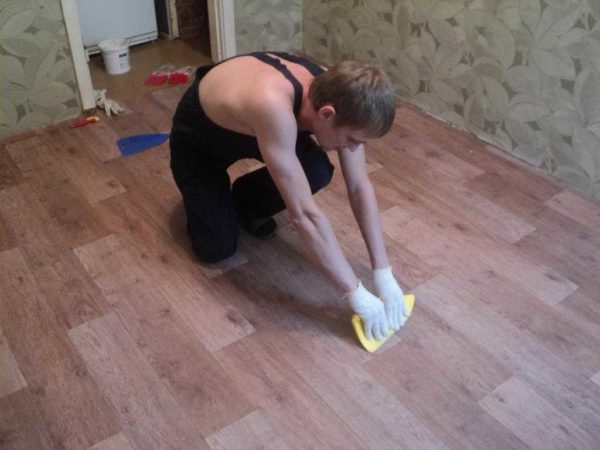
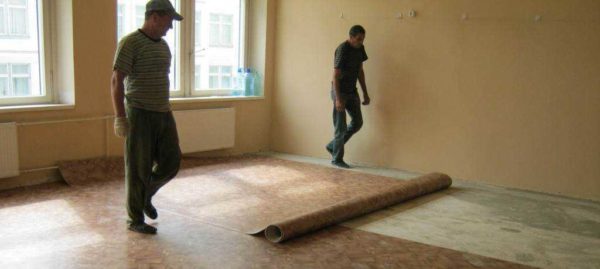
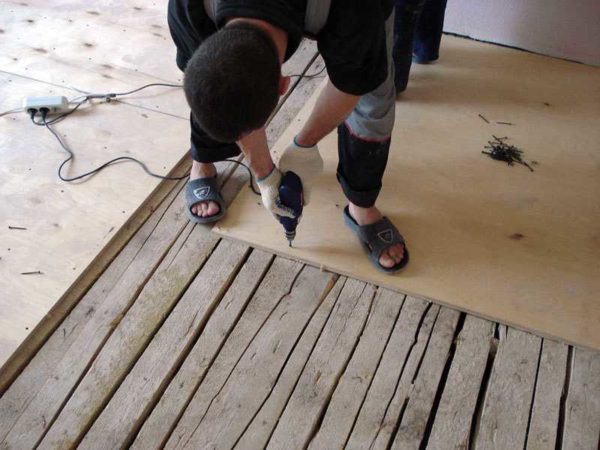
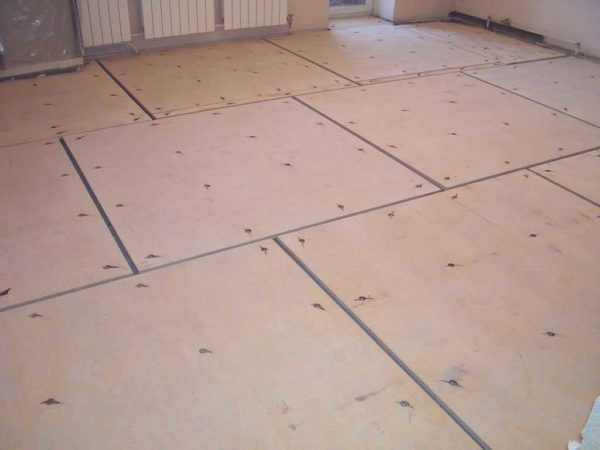
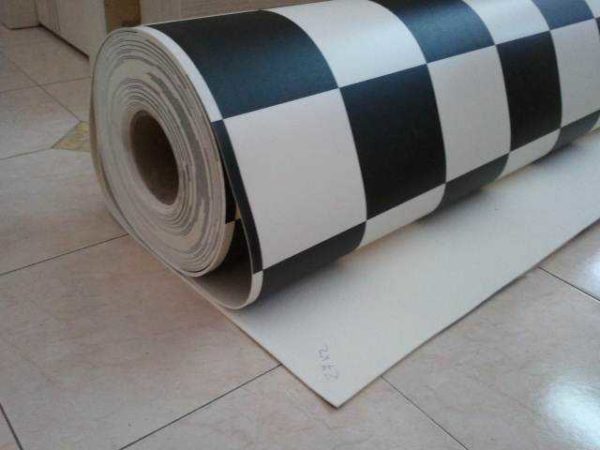
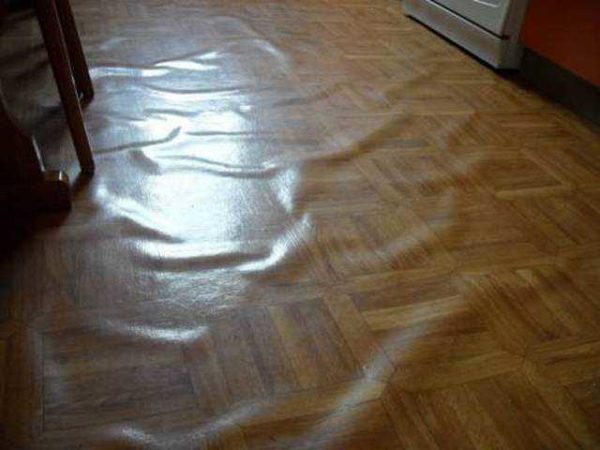
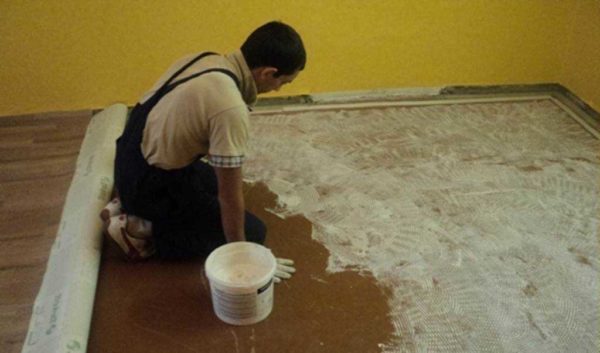
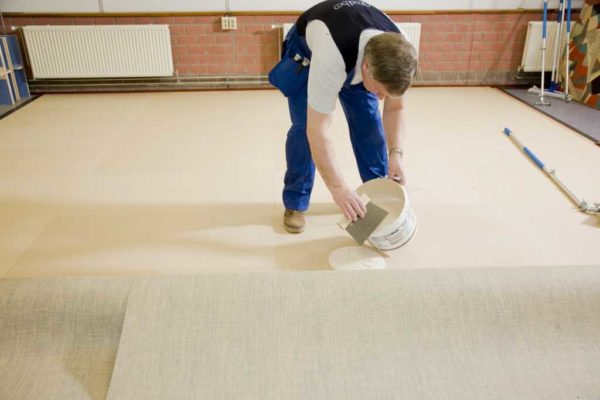

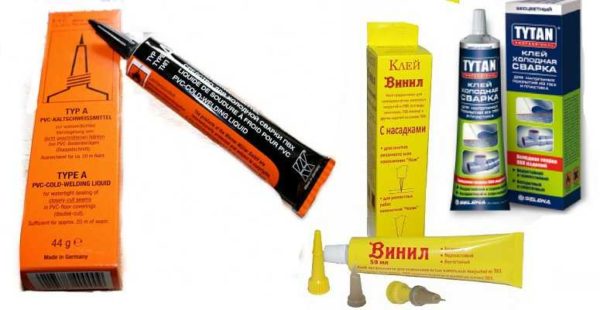
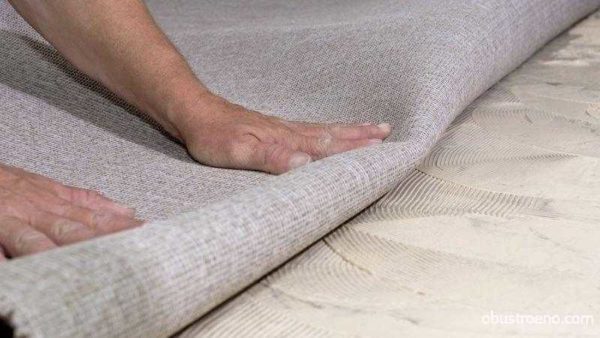

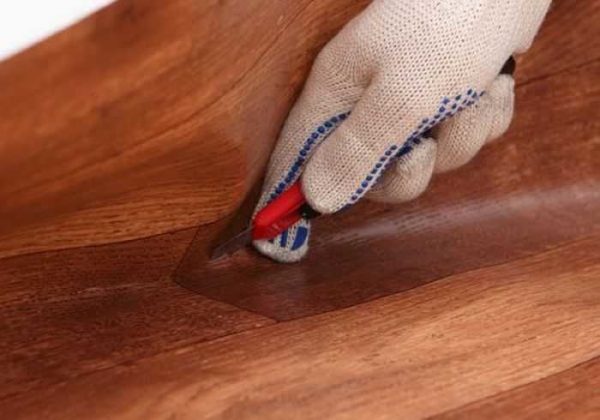
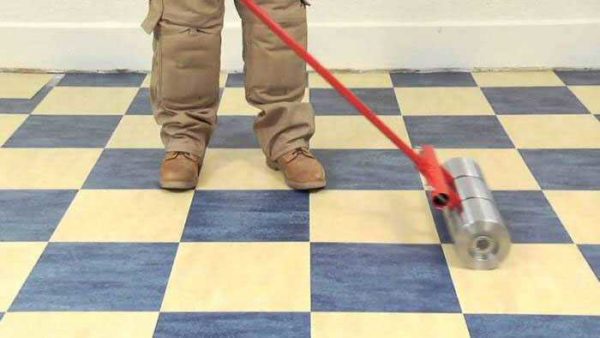
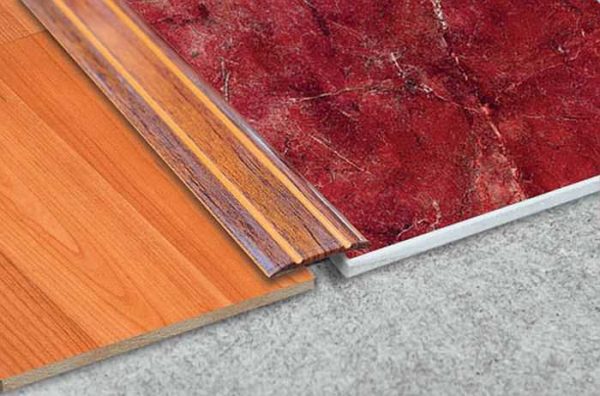
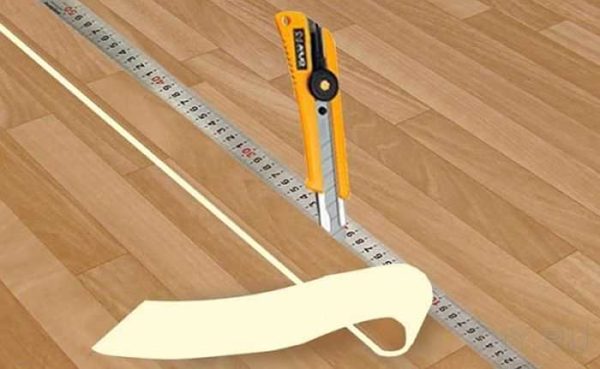
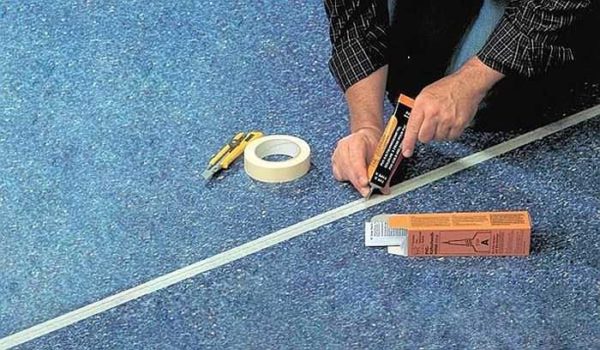

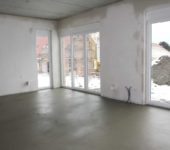
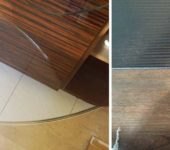
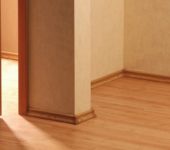
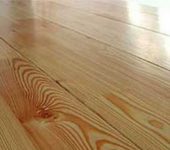





As a rule, mastics are most often used for laying linoleum. They are distinguished by high strength, moisture resistance, which allows them to play the role of waterproofing.